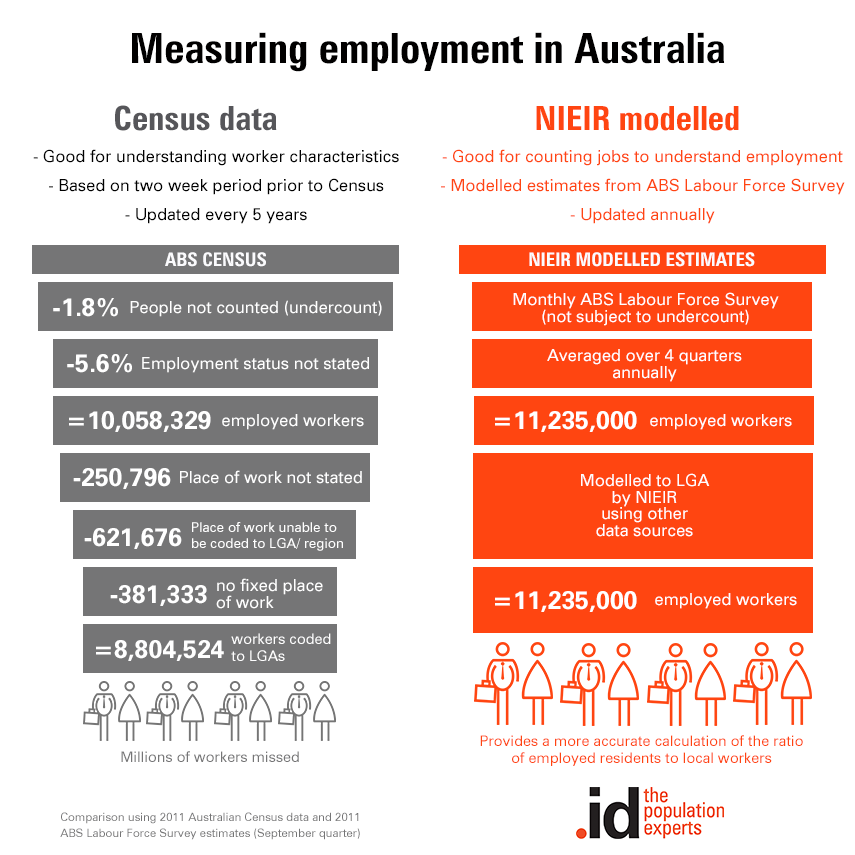The Census is a fantastic resource for all aspects of population characteristics – it’s no secret, we love it! And when it comes to understanding the workforce in an area, the fact that Census codes people by their place of work is a bonus, as the characteristics of the workforce can be very different to those of the residents. And we represent this dataset in our economy.id tool.
Unfortunately, when it comes to giving an accurate picture of the number of jobs in an area, broken down by industry, Census falls a bit short. It’s still useful but there are quite a lot of people missing from the Census workforce data.
The problem with using Census data for employment estimates
The overall Census does not count everyone but this is usually only about 1.8% of the population (in 2011). In addition to the undercount, there are some further omissions, including people who:
- don’t state whether or not they are employed
- are employed but don’t state where they work
- stated a workplace but it couldn’t be accurately coded by the ABS
- genuinely work at no fixed address but who still contribute to the economy of a wider area.
The benefits of using the Labour Force Survey
The ABS Labour Force Survey is not subject to these constraints. It is interview based and workers can be more accurately coded to a place of work, an industry and there is no “Not stated” component. The survey doesn’t normally produce small area estimates, but the NIEIR microsimulation model takes this data, combines with other sources and produces estimates for Local Governments which are much closer to accurate workforce numbers than the Census – plus they have the added bonus of being annually updated too, so you don’t have to wait for 5 years for up-to-date information.
The missing millions
These charts show the deficiencies in using the Census data for workforce estimates Australia-wide, including the number of people in the 2011 Census who were employed and could be accurately coded to an LGA, and how the ABS Labour Force Survey estimates differ from this in terms of total numbers.

So the upside of using the Labour Force Survey (which NIEIR bases their estimates on) is that in 2011 it accounts for 2.4 million more people in the Australian workforce than the Census can accurately code to a Local Government Area. This equates to roughly a 20% shortfall and is why, even though the Census is a good source of workforce characteristics, it’s not the best source for workforce numbers.
This discrepancy is higher in areas where there is a lot of Construction employment because generally over a third of Construction employees don’t have a usual workplace address.
Where the Census falls short
Some examples of places where the NIEIR estimates are significantly higher than what the Census (for 2011):
Telling the story of your economy
NIEIR data modelling is a core component of economy.id, supplementing the Census data to give you a more accurate view of what’s happening in your economy, based on jobs, output, value-add, imports, exports and number of businesses. Census data is still an important part, but it’s just one aspect of telling the economic story of your area.
The .id community includes economic profiles for hundreds of local government areas across Australia, which you can use to tell the story of your local economy.




.png)





